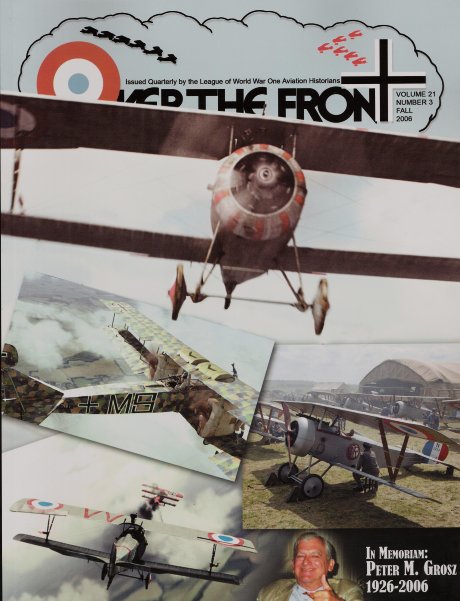
Above image is Lt. Col. Hartney post war.
Quoted Text
". . .Although it was never recorded at least officially in the records of the 185th Aero Squadron, Major Harold Hartney now commander of the 1st Pursuit Group reportedly flew a mission on the night of October 22 in one of the unit’s Gnome powered Camels. Following take off from Rembercourt he climbed to 10,000 feet altitude over Verdun, planning to cruise in the general area of the city until a friendly searchlight picked up an enemy bomber in its beam. To stretch his fuel on the guzzling 160 hp Gnome Major Hartney alternately cut his engine off and on again to increase his flight time. (One member of the 185th said that “...the Gnome was easy to restart in mid air. Just drop the nose a bit and apply throttle. She would start every time...”) After several minutes of flight over Verdun Major Hartney noticed several searchlight beams converging in a southward slant. This indicated that the enemy were about. Bringing his engine back to life he tested his Vickers machine guns and began his climb to 12,000 feet. The crews manning the searchlight beams were still searching the sky for the elusive enemy engines droning their familiar sounds, “ Wonka Bonka ...Wonka Bonka ...Wonka Bonka...” Major Hartney could only hear the sounds of his rotary as he sped toward the lights. About 1,000 feet above and ahead of him he noticed blue exhaust flames. Even at full throttle it would take him five more minutes to catch up. Then he noticed his air speed was greater than anticipated and he almost collided with what he was to identify as a Gotha Bomber. Had it not been for one of the German crew members shining a light from the fuselage of the Gotha onto one of its engines, Major Hartney would probably not have realized the high rate at which he was actually approaching the enemy. He cut his throttle and since the Camel was nose heavy it stalled and dropped several hundred feet. Major Hartney regained control and with throttle power on, he pulled up behind and below the dimly outlined German bomber. His gun sight useless he pointed the nose of his ‘Camel” and squeezed off a long burst. Almost immediately the “Camel’s” engine stopped and as the Gotha disappeared in the darkness the Major Hartney began to loose altitude. Switching to his reserve fuel tank which held about 15 minutes of fuel he got the engine running once again, but he was at 8,000 feet, 20 miles from base and a haze was now covering the ground. To his good fortune he recognized a roadway below that gave him his exact position and he headed for home. As he approached the aerodrome Major. Hartney saw a vertical searchlight beam that his Group had installed at the nearby dummy airfield, so he descended to 2,000 feet and passed over the legitimate airfield, flashing the recognition code with his Identity Light mounted under the belly of the fuselage. After releasing a Parachute Flare he glided earthward. By the light of the parachute and wing tip flares he was able to land safely. His reserve tank practically dry.
It was nine days after the Armistice of November 11, 1918 that a Gotha Bomber was found in some woods south of Verdun. It lay in the same general where Major Hartney reported the contact with his Gotha. Inspection reported that apparently this machine had been riddled from below. There was no sign of the crew nor was there any indication as to their fates. It was generally accepted that stringent codes of confirmation would not allow the credit to go to Major Hartney officially. Yet equally, there does not seem to be any record of Major Hartney ever pressing the matter further after he landed that night. . ."
Note the Gnome powered Camel consumed fuel at twice the rate of Clerget & LeRhône powered versions. But the fuel tanks were the same size.













